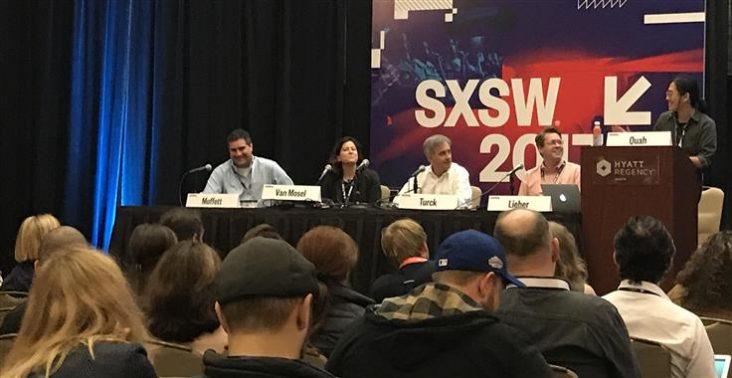SXSW: Kudos and concerns for the maturing podcast market
by March 16, 2017 6:57 am 353 views

Editor’s Note: Brett Parker, director of media services for Little Rock-based Stone Ward, will this week provide occasional updates on events he attends at the SXSW conference in Austin, Texas.
—————————–
In the summer of 2016, Tony Kornheiser left broadcast radio for the world of podcasting. That’s not big news to most people, but for those that work in media, it definitely raised some eyebrows.
Kornheiser is the popular co-host of ESPN’s PTI (Pardon The Interruption) and a former long-time Washington Post columnist. His announcement was significant because his local sports radio show had been running for more than 20 years and ESPN had syndicated it nationally for much of that time. This move begged the question, “Has podcasting matured enough to compete with broadcast media for advertising dollars?”
At SXSW’s Evolution of Podcast Advertising panel, Bryan Moffett, Sarah Van Mosul, Matt Truck and Matt Lieber joined Hot Pod’s Nick Quah to provide the answer. Truck, Panopoly’s Chief Revenue Officer, began the session lauding Direct Response Advertisers who have carried podcasting from its inception in 2004. Indeed, The Tony Kornheiser show initially launched exclusively with direct response ads from Blue Apron and Harry’s Shave Club, among a few others.
Moffett, General Manager of National Public Media, agreed but quickly added that he has seen a balance arise with their podcasts now seeing a virtual 50/50 split between direct response and Fortune 100 brands ad placement.
So that’s who’s buying the ads, but who is listening to them? “Over the past two years, monthly podcast listening has grown by 40%,” said Quah, “and now reaches 67 million Americans.”
Van Mosel, recently named Chief Podcast Sales and Strategy Officer at Market Enginuity, believes this audience is uniquely valuable because of the demographic and behavioral targeting it offers marketers. Gimlet Media’s President Matt Lieber added that product endorsements delivered through podcasts carry added weight due to the connection felt by the listeners to their trusted podcast hosts.
“For a podcast you’re dedicated to, it’s like the host is there with you in your car, your living room, the gym. In the age of ad blockers, it’s a great channel to deliver a message in a way that people will be open and responsive to,” Lieber said.
Along with all the praise they gave their media platform, they offered a few concerns. First, and most importantly, they are concerned with a lack of standards and third-party verification of their advertising effectiveness. Second, podcast listening is still treated as entertainment, rather than habit, meaning consuming the same content at the same time on a regular basis. The third concern was with the fractured podcast delivery ecosystem. The market leader is Apple’s Podcasts player with 10% of the share.
So back to the question at hand about the maturity of the podcasting as a media placement option for advertisers, National Public Media’s Bryan Moffett may have answered the question in the first minute of the panel’s discussion.
“Our fiscal year ended in September of 2016, and when we approached our advertising partners about continuing their investment for 2017, we had zero percent erosion,” he said.
A one hundred percent renewal rate is validation, indeed.
